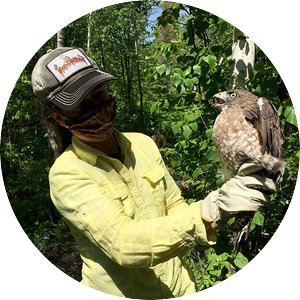With several climate-change-related experiments in progress, the HWRC is gaining on-site biodiversity data and other information through research, student, and citizen-science efforts. Researchers are using our center for a variety of projects. Current and recent topics include:
- Studying how Minnesota’s tree and shrub species and lichens and mosses are adapting to the changing climate and impacting forest ecosystems
- Monitoring wildlife populations to collect data and improve wildlife conservation approaches
- Developing technology and improving techniques for forest mapping and inventories
Hubachek Wilderness Research Center’s predominantly passively managed boreal-transitional forest landscape is an ideal location for long term, place-based research. Incorporated into the University's Research and Outreach Center system in 2014, HWRC invites new experimental and observational research projects. Its location also provides a great jumping-off point for research travel into the Boundary Waters Canoe Area Wilderness and Quetico Provincial Park. The property and surrounding areas lend themselves to research in:
- Ecology of the boreal transitional forest ecotone
- Aquatic and wetland ecology
- Water quality (possibly as related to proposed sulfide ore mining activities)
- Landscape ecological restoration
- Invasive species research and management
- Biological (and hydrological, geological, soils, etc.) inventories, mapping, and monitoring, especially where these establish baseline data for future applications.
- Field experimental and data collection methods development and testing.
- Sociological inquiries into various wilderness uses, human impacts and attitudes
- Histories of regional cultural use and management practices, and extractive industries.
- Reconstruction of HWRC history beginning in the early 1900s.
Research History
Quetico-Superior Wilderness Research Foundation
Research at our site began long before the HWRC was officially established. The Quetico-Superior Wilderness Research Foundation was established in 1948 at its original home on Basswood Lake in cooperation with regional colleges, universities, and forest management agencies. The foundation supported research on white pine blister rust, forest disturbance ecology, and other biological, ecological and sociological inquiries through the 1980s.

